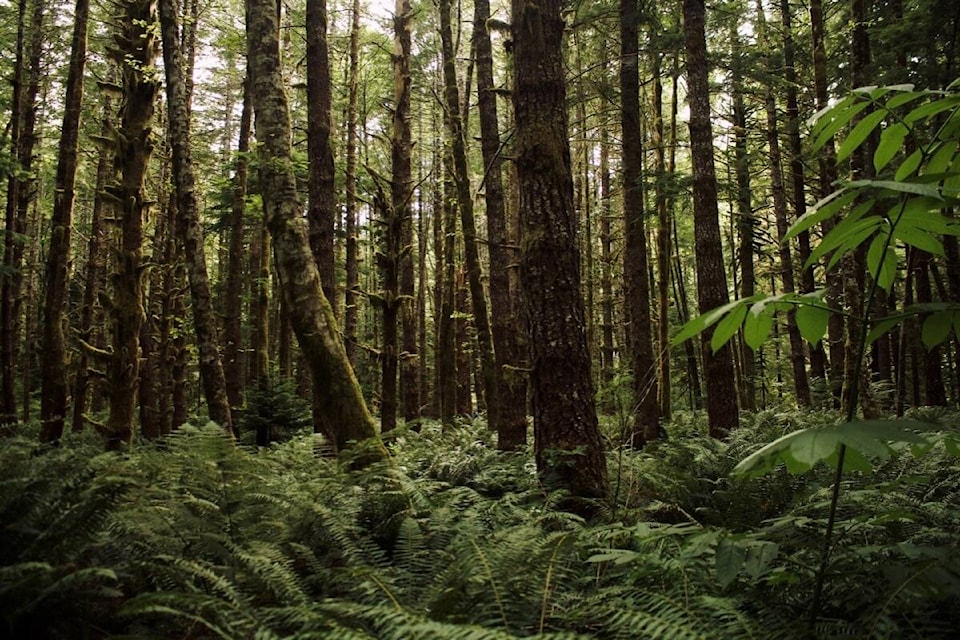Nearly daily anti-logging protests outside the B.C. legislature continue to harvest horn honks with calls to preserve the last three per cent of old-growth forests, as the B.C. government wrestles with its commitment to Indigenous rights.
That number is far from accurate, the B.C. Council of Forest Industries (COFI) says in a new survey that measures wildfire damage, the extent of old forests, and how much of the vast preservation area are on high-productivity land that supports the biggest trees.
The Status of B.C.’s Old Forests: The Situation in 2021 was prepared by Forsite Consultants of Salmon Arm for COFI, using satellite and other data to rate landscape productivity and the effect of three widespread fire seasons in the past five years.
“While all old forests contribute to biodiversity, there has been much public discussion about the amount of old forests growing on sites capable of producing big trees – with some reports falsely suggesting this amount to be 3%,” states the report by foresters Cam Brown and Jim Thrower. “In reality, the study found over 3.3 million hectares of old forests, or about 30%, are growing on high productivity sites capable of producing big trees.”
Brown’s previous work on forest inventory in B.C. included retention strategies for the Great Bear Rainforest legislation of 2017, which defined new protection in a large area of B.C.’s central coast. The Great Bear Rainforest North and South timber supply areas now govern harvest, with annual allowable cuts of more than 800,000 cubic metres for each zone.
RELATED: B.C. minister says province reasserting forest control
RELATED: Indigenous partnership revives B.C. biomass plant
Forests Minister Katrine Conroy announced forest policy changes this week to create 10-year landscape plans for other areas of B.C., describing it as taking back control of Crown land from industry that developed under the previous government’s “results-based” regulation. The changes will make the province “landlord of the forests again” and direct a larger share of Crown timber rights to Indigenous communities, Conroy told the legislature Oct. 20.
COFI president Susan Yurkovich said the industry supports modernization and cooperation with Indigenous and local communities. “Modernization would be building on what is currently a rigorous, world-leading provincial forest management regime where the B.C. government has significant oversight,” Yurkovich said.
B.C already has more than 50 million hectares of forests certified internationally, a chief forester who sets annual allowable cut of less than one per cent of B.C.’s harvestable area, and plants three trees for each one harvested, COFI says.
@tomfletcherbc
tfletcher@blackpress.ca
Like us on Facebook and follow us on Twitter.
